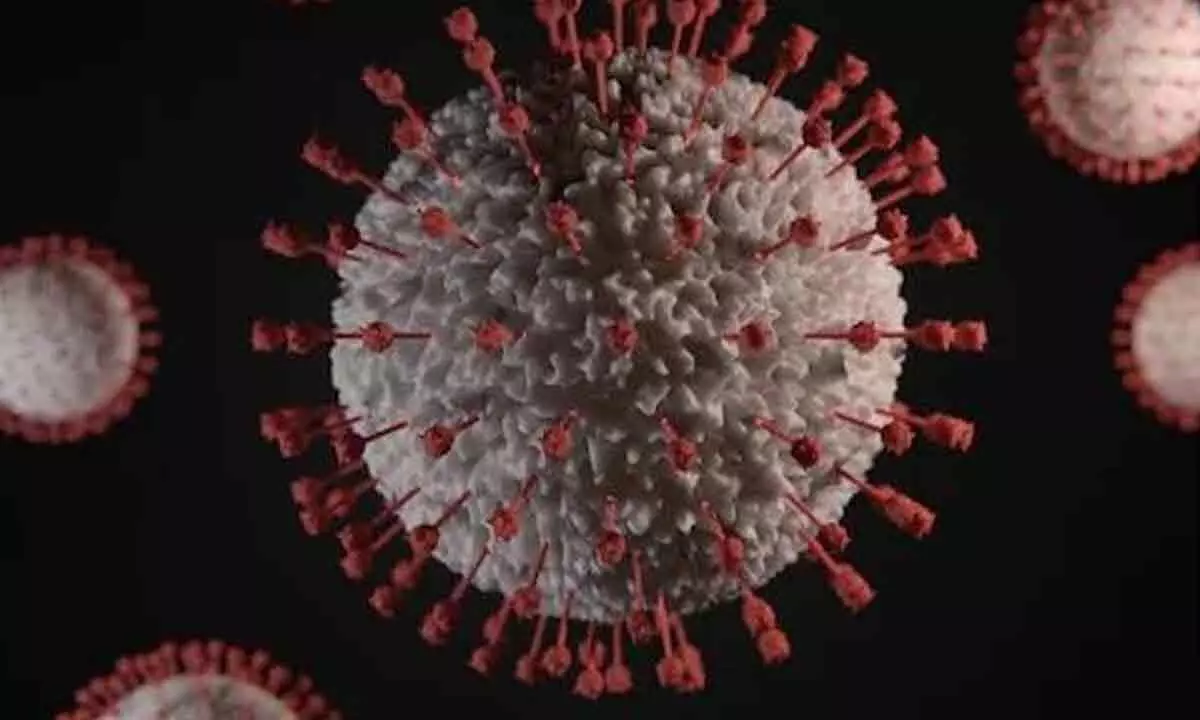Live
- Students in slums face accessibility challenges
- Early AI adoption saving Indians 2 hrs a day
- 5 lakh fishlings released into Tandava reservoir
- The role of habit building in mental wellness
- Efforts to improve fishermen’s livelihood highlighted
- JNCASR team develops new tech for early, accurate detection of HIV
- Grand finale of Master Orator season-5 held
- Can digital chemistry turn into real love ?
- Almonds: A Key to Healthy Living
- Priyanka Chopra steals hubby Nick Jonas’ jacket
Just In
Coronavirus particles found in air can infect humans: Study


'Scientists still suggest wearing masks to avoid spread of virus'
Hyderabad: The exact mechanism of spread of coronavirus SARS-CoV-2 has remained elusive. Earlier thought to spread by surfaces, epidemiologists found that people in countries who wore masks during the pandemic were affected less severely.
However, quantitative evidence that shows the infectious virus particles in air was lacking. A collaborative study by a group of scientists from CSIR-CCMB and CSIR-IM Tech, Chandigarh, along with hospitals, confirms the airborne transmission of SARS-CoV-2. The study has been published in the Journal of Aerosol Science.
A release said scientists analysed for the coronavirus genome content from air samples collected from different areas occupied by Covid patients. They included hospitals, closed rooms in which only Covid patients spent a short period of time and houses of home-quarantined patients. They found that the virus could be frequently detected in air around patients; the positivity rate increased with the number of patients present in the premise. They found the virus in ICU as well as non-ICU sections of hospitals, suggesting that patients shed the virus in air irrespective of the severity of infection.
The study also found viable coronavirus in air that could infect living cells; the viruses could spread over a long range of distances. Scientists still suggest wearing masks to avoid the spread of coronavirus.
"Our results show that coronavirus can stay in the air for some time in absence of ventilation in closed spaces. We found that the positivity rate of finding the virus in the air was 75% when two or more Covid patients were present in a room, in contrast to 15.8% when one or no Covid patients occupied the room in these studies. Our observations are concurrent with previous studies that suggest that the concentration of SARS-CoV-2 RNA is higher in indoor air as compared to outdoor air; and in indoor, it is higher in hospital and healthcare settings that host a larger number of Covid patients, as compared to that in community indoor settings," said Dr Shivranjani Moharir, scientist involved in the study.
Dr Rakesh Mishra, the lead scientist of the work, CSIR Distinguished Emeritus Professor at CCMB, and Director, Tata Institute for Genetics and Society, said "As we are back to conducting in-person activities, air surveillance is a useful means to predict infection potential of spaces, like classrooms, meeting halls. This can help refine strategies to control the spread of infections. The air surveillance technique is not just limited to coronavirus but can also be optimised to monitor other air-borne infections."

© 2024 Hyderabad Media House Limited/The Hans India. All rights reserved. Powered by hocalwire.com






